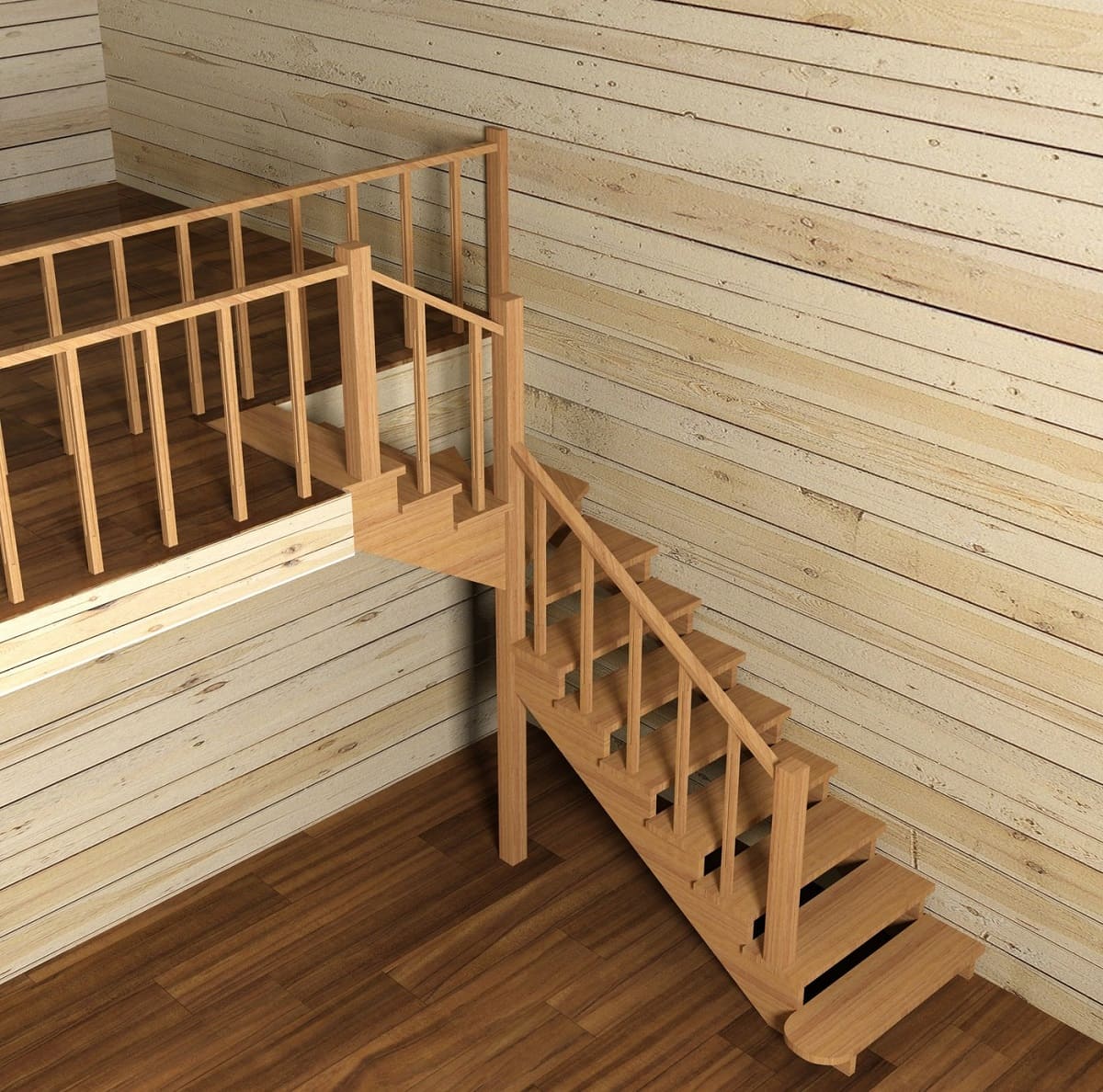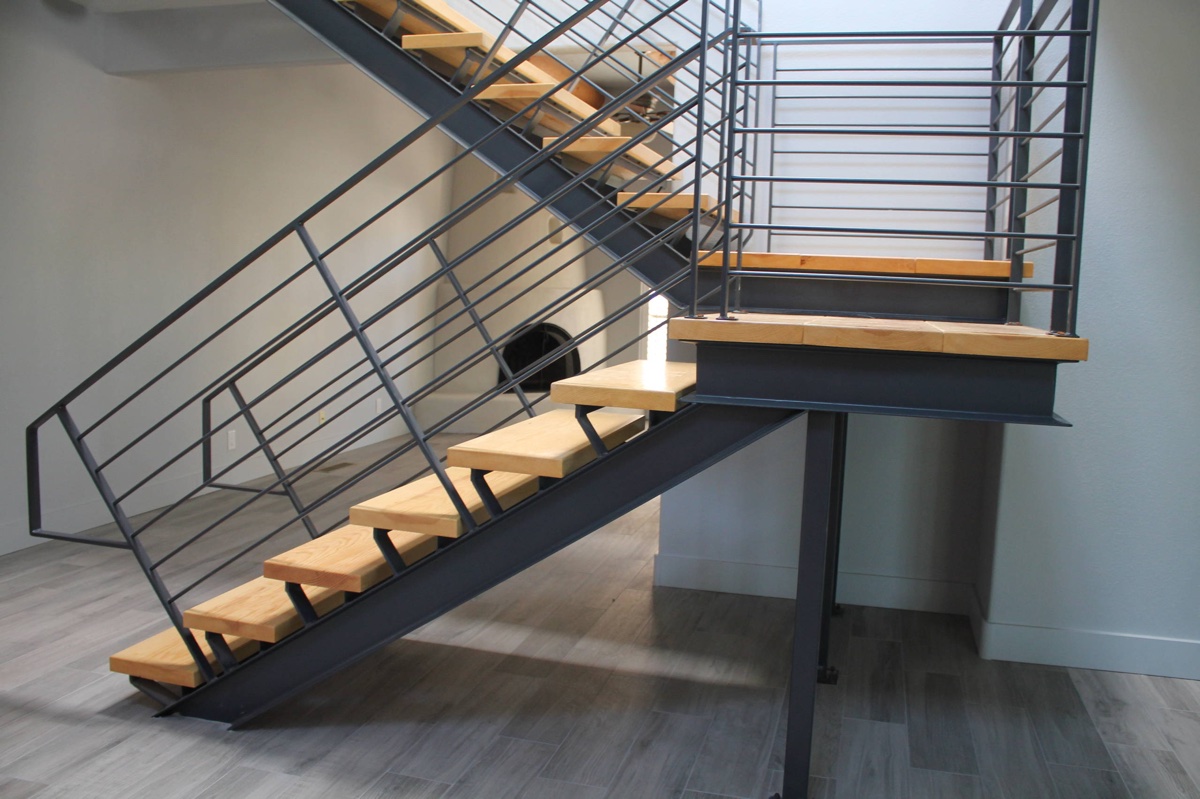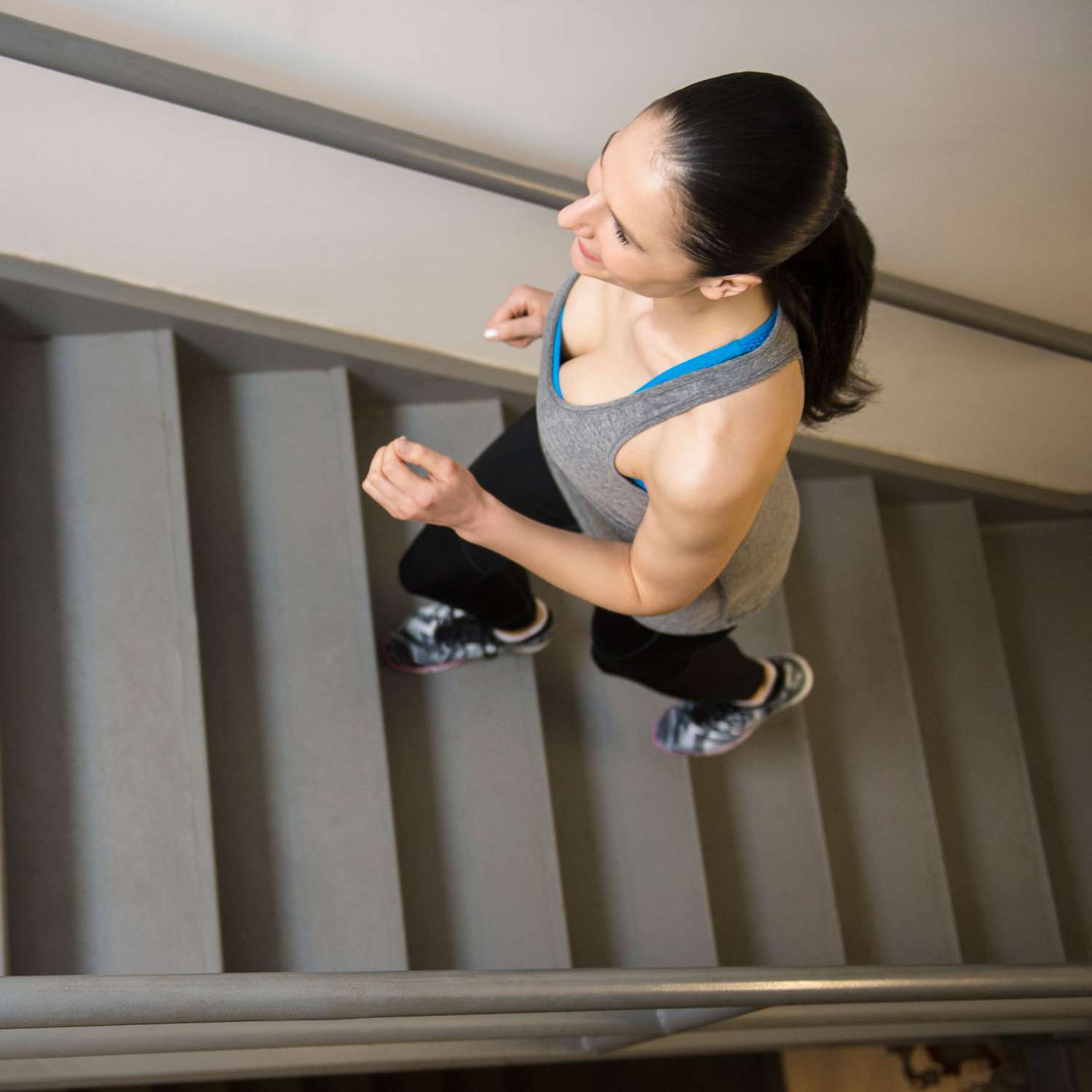

Articles
How To Use A Dolly On Stairs
Modified: January 20, 2024
Learn how to safely navigate stairs with a dolly in this informative article. Discover essential tips and techniques to make moving heavy items a breeze!
(Many of the links in this article redirect to a specific reviewed product. Your purchase of these products through affiliate links helps to generate commission for Storables.com, at no extra cost. Learn more)
Introduction
Using a dolly to transport heavy items up or down stairs can be a challenging task. Whether you are moving furniture, appliances, or other bulky objects, having the right techniques and equipment is crucial to ensure a smooth and safe transition. In this article, we will guide you through the process of using a dolly on stairs, providing you with valuable tips and insights to make the task as easy as possible.
Moving heavy objects manually can put a strain on your body and increase the risk of accidents. By using a dolly, you can minimize physical exertion and effectively distribute the weight of the load, making it much easier to navigate through staircases. However, it is important to understand the different types of dollies available and the proper techniques to use them effectively.
In the following sections, we will explore the various types of dollies suitable for stair use, along with the necessary preparations needed to ensure a safe and efficient moving process. We will discuss how to secure the load on the dolly, position it correctly on the stairs, and execute the movement smoothly. Additionally, we will provide important safety measures to follow during the process.
Whether you are a professional mover or simply tackling a DIY moving project, the information in this article will be invaluable in mastering the art of using a dolly on stairs. So, let’s dive in and discover the techniques and tips that will make your next stair-moving experience a breeze.
Key Takeaways:
- Proper preparation, including clearing the path, measuring the stairs, and securing handrails, is crucial before using a dolly on stairs. Choosing the right dolly based on weight capacity, size, and features greatly enhances stability and ease of use.
- Utilizing helpful tips and tricks, such as leveraging gravity, using ramps or plywood, and practicing on flat ground, can optimize the use of a dolly on stairs. Prioritizing safety, taking breaks, and communicating effectively with others are essential for a successful and injury-free moving experience.
Read more: How To Use An Appliance Dolly On Stairs
Understanding the Basic Types of Dollies
Before you can effectively use a dolly on stairs, it’s important to familiarize yourself with the different types available. Each type of dolly has its own advantages and is designed for specific purposes. By understanding the basic types of dollies, you can choose the right one for your particular needs.
1.1 Furniture Dolly:
A furniture dolly, also known as a utility dolly, is a common type of dolly used for moving large items such as couches, cabinets, or mattresses. It typically consists of a flat platform with four wheels and a handlebar for maneuvering. Furniture dollies come in various sizes and weight capacities, so make sure to choose one that can handle the weight of your load.
1.2 Appliance Dolly:
As the name suggests, appliance dollies are specifically designed for moving heavy appliances such as refrigerators, stoves, or washing machines. These dollies have a strap attachment to secure the appliance and are equipped with stair climbers to navigate steps more easily. Appliance dollies often have a wider base and stronger construction to handle the weight of bulky appliances.
1.3 Hand Truck:
A hand truck, also known as a two-wheeler, is a versatile type of dolly that can be used for a wide range of items. It consists of two wheels, a handle, and a small platform to support the load. Hand trucks are great for moving boxes, smaller furniture pieces, or even stacked items. They are lightweight and easy to maneuver, making them suitable for both indoor and outdoor use.
1.4 Platform Dolly:
Platform dollies, also called flat dollies or four-wheel dollies, are similar to furniture dollies but often have a larger platform area. They are designed for moving heavy or bulky items that do not require the support of a specialized dolly. Platform dollies are excellent for transporting large boxes, crates, or other items that can be securely placed on the platform.
By understanding the differences between these basic types of dollies, you can choose the one that best suits your needs. Consider the size and weight of your load, as well as any specific features required for stair use, such as stair climbers or straps. With the right dolly in hand, you’ll be well-equipped to tackle your stair-moving project efficiently and safely.
Preparing the Stairs and Environment
Before you begin using a dolly on stairs, it’s essential to prepare both the stairs and the surrounding environment. Proper preparation will not only make the task easier but also reduce the risk of accidents and damage to the items you’re moving. Here are some important steps to follow:
2.1 Clear the Path:
First, ensure that the stairway and the area around it are clear of any obstacles. Remove any loose objects, rugs, or debris that could cause tripping hazards or interfere with the movement of the dolly. It’s also important to secure any doors or gates leading to the stairway to prevent them from swinging open during the process.
2.2 Measure the Stairs:
Take accurate measurements of the stair dimensions to ensure that the items and the dolly can fit comfortably. Measure both the width and the height of the stairs, and compare them with the dimensions of the dolly you’re using. It’s important to have enough space for the dolly and the load to pass through smoothly without risking damage to the walls or the stairwell.
2.3 Assess the Condition of the Stairs:
Inspect the condition of the stairs to identify any potential hazards. Look for loose or broken steps, uneven surfaces, or other structural issues that could make the movement more difficult or dangerous. If you notice any significant problems, it may be necessary to address them before attempting to use a dolly on the stairs.
2.4 Secure Handrails:
Confirm that the handrails on the stairs are stable and securely attached. Handrails provide crucial support and stability during the moving process. If the handrails are loose or damaged, consider repairing or reinforcing them before proceeding. This will help ensure your safety and provide additional stability while using the dolly.
2.5 Protect the Stairs:
To prevent damage to the stairs, consider using protective coverings or padding. You can use blankets, towels, or specialized stair covers to create a barrier between the dolly and the stair surface. This will help prevent scratches, dents, or other marks on the stairs as you navigate with the load. It’s also recommended to place non-slip mats or grip tape on the stairs for added traction and stability.
By taking the time to prepare the stairs and the environment, you’ll create a safer and more efficient moving experience. Clearing the path, measuring the stairs, assessing their condition, securing handrails, and protecting the stairs will ensure that you can maneuver the dolly smoothly and protect the integrity of your surroundings. With these preparations in place, you’ll be ready to move onto the next step of using a dolly on stairs.
Choosing the Right Dolly for Stair Use
Selecting the appropriate dolly for stair use is integral to the success and safety of your moving project. The right dolly will provide the necessary support and maneuverability to navigate stairs smoothly. Here are some factors to consider when choosing a dolly for moving items on stairs:
3.1 Weight Capacity:
Ensure that the chosen dolly has a weight capacity that exceeds the weight of the load you intend to transport. Exceeding the weight capacity may strain the dolly and compromise its stability. It’s always better to choose a dolly with a higher weight capacity than you think you’ll need to be on the safe side.
3.2 Stair Climbers:
Look for a dolly specifically designed with stair climbers. Stair climbers are essential for managing the transition between steps smoothly. They are typically built with small wheels or tracks that allow the dolly to move up or down the stairs with relative ease. Stair climbers offer added stability and help distribute the weight of the load evenly throughout the movement.
3.3 Size and Dimensions:
Consider the size and dimensions of the dolly in relation to the items you will be moving. A dolly that is too large or too small can impede your ability to navigate the stairs effectively. Ensure that the dolly is wide enough to accommodate the item, and that it has enough clearance to fit through the stairway, including any doors or tight spaces.
3.4 Handlebars and Grips:
Look for a dolly with sturdy and ergonomic handlebars or grips. The handlebars should provide a comfortable grip and allow for easy maneuvering of the dolly. Look for features like cushioned grips or textured surfaces that prevent your hands from slipping during use. A properly designed handle will reduce strain on your body and provide better control over the dolly.
3.5 Strapping Options:
Consider whether the dolly offers strapping options to secure the load. Straps or buckles on the dolly can help prevent the load from shifting or falling off during the moving process. This is especially important while navigating stairs, as the added movement and uneven surfaces can increase the risk of accidents. Using straps will provide an extra layer of security to keep your items in place.
3.6 Portability and Storage:
Lastly, think about the portability and storage of the dolly when not in use. Look for a dolly that is lightweight and easy to transport, as well as one that can be folded or disassembled for convenient storage. This way, you can easily move and store the dolly when it’s not in use, saving space and ensuring it is readily accessible for future projects.
By considering these factors, you can select the right dolly for moving items on stairs. Choosing a dolly with an adequate weight capacity, stair climbers, appropriate size and dimensions, comfortable handlebars, strapping options, and portability will make the stair-moving process much smoother and safer.
Securing the Load on the Dolly
When using a dolly to transport items on stairs, it is crucial to properly secure the load to ensure its stability and prevent it from shifting or falling off during the movement. Here are some tips to help you secure the load effectively:
4.1 Assess the Load:
Before placing the load on the dolly, carefully assess its weight distribution and any potential hazards. If the load is imbalanced, consider redistributing the weight to ensure better stability. Additionally, remove any loose parts or items that could interfere with the placement and security of the load on the dolly.
4.2 Use Straps or Bungee Cords:
Secure the load to the dolly using straps or bungee cords. These can be wrapped around the load and attached to the dolly to prevent it from shifting or falling during the movement. Make sure the straps or cords are tight but not overly constrictive, allowing for some flexibility while maintaining a secure hold on the load.
4.3 Distribute the Load Evenly:
Ensure that the load is evenly distributed on the dolly. This will help maintain the stability and balance of the load throughout the moving process. If needed, adjust the position of the load on the dolly to achieve an even distribution of weight.
4.4 Protect Fragile Items:
If you are transporting fragile items, take extra precautions to protect them from bumps or impacts. Use padding or blankets to wrap fragile items and secure them with straps or bungee cords to keep them in place. This will prevent damage and provide cushioning during the movement.
4.5 Double-check the Security:
Before proceeding with the movement, double-check that all straps and cords are securely fastened. Give them a gentle tug to ensure they are tightly secured and will not loosen during the transport. It is essential to have full confidence in the load’s stability before navigating the stairs.
4.6 Consider Assistance:
If the load is particularly heavy or cumbersome, consider enlisting the help of another person to assist with securing the load and maintaining its stability. Having an extra pair of hands can make it easier to properly secure the load on the dolly, ensuring a safer and smoother moving experience.
By following these tips, you can ensure that the load is properly secured on the dolly, minimizing the risk of the load shifting or falling off during the movement on stairs. Properly securing the load not only protects your items but also contributes to overall safety and stability during the moving process.
When using a dolly on stairs, always make sure the weight is evenly distributed and use a spotter to help guide and stabilize the load.
Read also: 6 Best Refrigerator Dolly for 2024
Positioning the Dolly on the Stairs
Proper positioning of the dolly on the stairs is crucial for a safe and smooth movement. It ensures that the load remains stable and allows for efficient navigation up or down the stairs. Follow these guidelines to position the dolly correctly on the stairs:
5.1 Starting Point:
Determine the starting point of the dolly’s ascent or descent. This is typically at the bottom or top of the stairs, depending on the direction of movement. Ensure that the dolly is positioned securely on a level surface before initiating the movement.
5.2 Angled Approach:
Approach the stairs at an angle rather than straight on. This will enable easier maneuverability and prevent the load from scraping against the stairs. Aim for a diagonal approach that allows you to smoothly transition onto or off of the stairs.
5.3 Positioning on Ascending Stairs:
If you’re moving the load up the stairs, position the dolly slightly below the load. This will give you better control and leverage as you lift the load onto the next step. The wheels of the dolly should be just below the load, providing support and stability.
5.4 Positioning on Descending Stairs:
For moving the load down the stairs, position the dolly slightly above the load. This allows you to have better visibility of the steps and maintain control as you descend. The load should be slightly below the wheels of the dolly for better stability.
5.5 Stair Alignment:
Ensure that the wheels of the dolly align with the steps of the stairs. This will help distribute the weight evenly and minimize the risk of tilting or swaying. Adjust the position of the dolly if needed to align the wheels with each step before proceeding with the movement.
5.6 Gripping the Handrails:
Throughout the movement, maintain a firm grip on the handrails of the stairs. This will provide additional support and stability as you guide the dolly up or down the stairs. Using the handrails helps you maintain balance and control throughout the process.
5.7 Take Your Time:
Don’t rush the positioning process. Take your time to ensure that the dolly is properly aligned with the stairs and that the load is secure. Rushing could lead to accidents or instability. Move slowly and methodically, ensuring that every step is executed with precision.
By following these guidelines, you can position the dolly correctly on the stairs, providing stability and control during the movement. Proper positioning ensures a smoother transition and minimizes the risk of accidents or damage to the load or the surroundings. Remember to take your time and proceed with caution at all times.
Moving the Load Up or Down the Stairs
Moving the load up or down the stairs with a dolly requires careful execution to ensure a safe and successful transfer. Follow these steps to navigate the stairs smoothly:
6.1 Maintain a Firm Grip:
Before initiating the movement, ensure that you have a firm grip on the handlebars or grips of the dolly. This will provide better control and stability throughout the process. Keep your hands in a comfortable position and maintain a balanced stance.
6.2 Engage Your Leg Muscles:
To minimize strain on your back and upper body, use your leg muscles to lift and support the weight of the load. Bend your knees and utilize your leg strength to apply force while pushing or pulling the dolly on the stairs. This technique will reduce the risk of injuring your back or losing control of the load.
6.3 Lift and Pivot:
If you are moving the load up the stairs, carefully lift the front of the dolly, utilizing your leg muscles, and pivot it onto the next step. Take small steps, lifting and pivoting one step at a time, until you reach the desired location. Remember to lift with your legs and not with your back, and maintain a smooth and controlled movement.
6.4 Lower and Guide:
If you are moving the load down the stairs, lower the front of the dolly onto the next step by gradually releasing pressure. Maintain a controlled descent, guiding the load down one step at a time. Again, use your leg muscles to lower and support the weight, ensuring a smooth and controlled movement.
6.5 Take Breaks if Needed:
If the load is particularly heavy or the stairs are challenging, don’t hesitate to take breaks and rest as needed. Moving heavy loads on stairs can be physically demanding, so it’s important to listen to your body and avoid overexertion. Taking short breaks between steps can help conserve energy and maintain focus.
6.6 Communicate and Coordinate:
If you’re moving the load with the help of others, clear communication and coordination are essential. Establish clear signals and ensure that everyone is on the same page. Work together to maintain balance, navigate the stairs, and avoid any sudden movements that could endanger the load or the individuals involved.
6.7 Stay Alert and Watch Your Surroundings:
Throughout the movement, remain alert and aware of your surroundings. Watch for obstacles, trip hazards, or any potential risks that could affect the movement. Be mindful of the handrails, stair edges, or any other factors that could impact the stability of the load or your own safety.
By following these steps, you can effectively navigate the stairs while moving the load with a dolly. Remember to prioritize safety, utilize your leg muscles, lift and pivot carefully, and communicate effectively if working with others. Take your time and maintain focused throughout the process to ensure a successful transfer.
Taking Safety Measures while Using a Dolly on Stairs
When using a dolly on stairs, it is crucial to prioritize safety to prevent accidents and injuries. Here are some key safety measures to keep in mind:
7.1 Wear Proper Protective Gear:
Before starting the moving process, ensure that you are wearing appropriate protective gear. This may include gloves to improve grip, closed-toe shoes with slip-resistant soles for traction, and safety goggles if necessary. Protective gear will help safeguard you from potential hazards and enhance your safety during the movement.
7.2 Maintain Clear Visibility:
Ensure that your vision is not obstructed while using the dolly on stairs. Clear visibility is crucial for avoiding tripping hazards or obstacles. If the load blocks your view, consider having a helper guide you by providing verbal directions or acting as a spotter to ensure a safe path.
7.3 Follow Proper Lifting Techniques:
Adhere to proper lifting techniques to avoid straining your back or causing injury. Bend your knees, keep your back straight, and lift with your legs while utilizing the strength of your core muscles. Avoid twisting your body while carrying the load and use your leg and arm muscles to provide support and stability.
7.4 Communicate and Coordinate with Others:
If multiple individuals are involved in the movement, effective communication is essential. Establish clear signals and cues to coordinate your actions and ensure everyone is on the same page. Communicate any changes in direction or halt commands promptly to prevent accidents and maintain control.
7.5 Take Regular Breaks and Rest:
Moving heavy loads on stairs can be physically demanding. To avoid exhaustion or overexertion, take regular breaks or rest intervals as needed. Use breaks to rehydrate, relax your muscles, and regain your focus before continuing with the movement. Ignoring fatigue can lead to accidents and compromise your safety.
7.6 Be Mindful of Weight Capacity:
Always adhere to the weight capacity limits specified by the manufacturer of the dolly. Overloading the dolly can strain its structure and compromise stability, increasing the risk of accidents. Ensure that the weight of the load does not exceed the recommended capacity to maintain a safe and controlled movement.
7.7 Use Caution on Uneven or Slippery Surfaces:
Exercise caution when navigating uneven or slippery surfaces on stairs. Watch your step and adjust your movements accordingly to maintain balance and stability. If the steps are wet or slippery, consider using additional non-slip material on the dolly or taking extra precautionary measures to prevent slips and falls.
7.8 Stay Focused and Alert:
Throughout the entire process, stay focused and attentive to your surroundings. Avoid distractions and keep your full attention on the movement of the load and the navigation of the stairs. Maintaining focus will help you react quickly to any potential hazards and prevent accidents from occurring.
By following these safety measures, you can minimize the risk of accidents and ensure a safe moving process while using a dolly on stairs. Remember to wear appropriate protective gear, communicate effectively, maintain proper lifting techniques, take breaks when needed, and stay alert at all times. Safety should always be the top priority to ensure a successful and injury-free moving experience.
Tips and Tricks for Using a Dolly on Stairs
Using a dolly on stairs can be a challenging task, but with some helpful tips and tricks, you can make the process easier and more efficient. Here are some valuable tips to keep in mind:
8.1 Measure Twice, Move Once:
Before you begin, take accurate measurements of the load, the stairs, and the dolly. This will ensure that everything fits properly and there are no surprises. Double-checking your measurements will save you time and effort in the long run.
8.2 Use Ramps or Plywood:
If the stairs are particularly rough or uneven, consider using ramps or plywood to create a smoother surface for the dolly. This can help prevent the wheels from getting caught or jolted during the movement, improving stability and making the process easier.
8.3 Utilize Gravity to Your Advantage:
When moving the load downstairs, use gravity to your advantage. Tilt the load slightly forward and let it slide gently from step to step under your control. This can help reduce the strain on your body and make the movement more effortless.
8.4 Pivot Strategically:
When maneuvering the dolly on a landing or turning a corner, use strategic pivoting techniques. Pivot the dolly smoothly on its wheels instead of lifting it off the ground. This minimizes strain and allows for more precise movement in tight spaces.
8.5 Communicate with Helpers:
If you have helpers assisting with the movement, clear communication is key. Establish simple signals or use verbal cues to coordinate your actions. This will ensure everyone is working together smoothly, enhancing safety and efficiency throughout the process.
8.6 Practice on Flat Ground First:
Before attempting to navigate the stairs, practice using the dolly on a flat surface first. This gives you a chance to familiarize yourself with the dolly’s movement and become comfortable with its operation. It also allows you to test the load’s stability and make any necessary adjustments.
8.7 Take Advantage of Leverage:
Use leverage to your advantage when lifting the load onto the next step. Use your body weight and leg muscles to generate upward force, making the lift easier. Leverage can help reduce strain and ensure a controlled, stable movement.
8.8 Use Proper Body Mechanics:
Maintain proper body mechanics throughout the process. Keep your back straight, engage your core muscles, and lift with your legs. This protects your back from strain and allows you to maintain balance and control while using the dolly on stairs.
8.9 Stay Organized and Prepared:
Plan and organize the moving process in advance. Clear a path, secure any loose items, and gather all necessary equipment before beginning. Being organized and prepared will help you complete the task smoothly and quickly.
8.10 Take Your Time:
Last but not least, take your time. Rushing increases the risk of accidents and mistakes. Move slowly and deliberately, focusing on maintaining control and stability throughout the process. Patience and careful execution ensure a successful and safe transition.
By following these tips and tricks, you can optimize your use of a dolly on stairs. Remember to measure properly, use ramps or plywood if necessary, leverage gravity, communicate effectively, practice beforehand, utilize proper body mechanics, and take your time. These insights will help make your dolly-moving experience on stairs more efficient, safer, and ultimately more successful.
Read more: What Polyurethane Finish To Use On Stairs
Conclusion
Using a dolly on stairs can be a challenging task, but with the right techniques and equipment, it becomes much more manageable. Throughout this article, we have explored the various aspects of using a dolly on stairs, including understanding the different types of dollies available, preparing the stairs and the environment, choosing the right dolly, securing the load, positioning the dolly on the stairs, safely navigating the stairs, and valuable tips and tricks to make the process smoother.
By following the guidelines outlined in this article, you can ensure a safe and efficient moving experience. Remember to prioritize safety by wearing protective gear, maintaining clear visibility, utilizing proper lifting techniques, communicating effectively with others if necessary, and taking regular breaks to prevent fatigue. Always be mindful of weight capacities, the condition of the stairs, and the stability of the load.
Proper preparation, such as clearing the path, measuring the stairs, and securing handrails, is essential before initiating the movement. Choosing the right dolly, based on weight capacity, the presence of stair climbers, size and dimensions, handlebars/grips, strapping options, and portability, will greatly enhance the stability and ease of use.
Positioning the dolly correctly on the stairs, whether for ascending or descending, ensures better control and smoother movement. Taking safety measures such as maintaining a firm grip, engaging leg muscles, and being alert to your surroundings further reduces the risk of accidents. By following these steps and considering helpful tips and tricks, such as utilizing ramps or plywood, leveraging gravity, and practicing on flat ground, you can enhance your dolly-using skills and make the process more efficient.
In conclusion, using a dolly on stairs requires careful planning, proper technique, and a focus on safety. Whether you are tackling a home moving project or working as a professional mover, the insights and knowledge gained from this article will equip you to handle stair-moving tasks with greater confidence and success. Remember to prioritize safety, take your time, and utilize the tips and tricks provided to ensure a smooth and secure transition of your items up or down the stairs.
Frequently Asked Questions about How To Use A Dolly On Stairs
Was this page helpful?
At Storables.com, we guarantee accurate and reliable information. Our content, validated by Expert Board Contributors, is crafted following stringent Editorial Policies. We're committed to providing you with well-researched, expert-backed insights for all your informational needs.














0 thoughts on “How To Use A Dolly On Stairs”